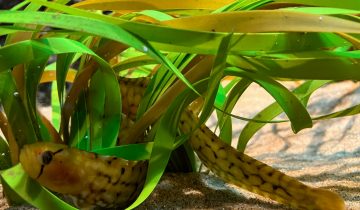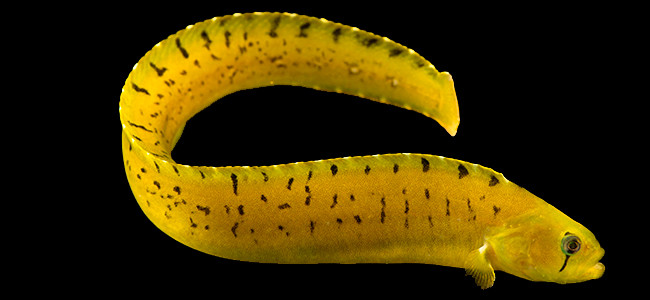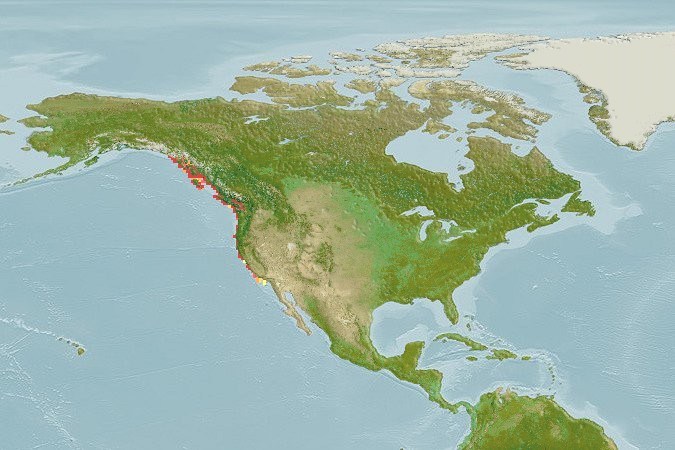Apodichthys flavidus, commonly known as the penpoint gunnel, is a species of ray-finned fish belonging to the family Pholidae, within the order Perciformes. Its scientific name has descriptive roots: the genus Apodichthys comes from Greek meaning ‘fish without fins‘, referring to the absence of pelvic fins, while the specific epithet flavidus derives from Latin meaning ‘yellowish‘, alluding to its coloration originally described as yellow with grayish tones. It is distributed along the northeastern Pacific, from Kodiak Island in Alaska down to Santa Barbara Island in southern California. It inhabits shallow intertidal zones (0 to 1.8 meters deep), mainly in kelp beds, seagrass meadows such as Zostera, and among rocks or under marine vegetation, where it can even remain out of water for brief periods thanks to its ability to breathe air.
Apodichthys flavidus is characterized by an elongated, eel-like body that can reach up to 46 cm in length. Its coloration is highly variable, ranging from green to brown or wine red, with patterns of dark and light spots along the body that allow it to camouflage effectively in its environment. A key distinctive feature is the dark bar just below each eye. It has a single long and continuous dorsal fin containing between 40 and 44 spines, an anal fin with one spine and 38 to 42 soft rays, as well as a rounded caudal fin. It lacks pelvic fins, and its first anal spine is shaped like a fountain pen tip, which gives it its common name. Although it resembles other members of the Pholidae family, it is easily distinguished by this spine and by the presence of short pale markings descending from the upper part of the dorsal fin.
This species is carnivorous and feeds mainly on small benthic invertebrates. Its diet includes molluscs, worms, and especially small crustaceans such as amphipods and copepods. It uses its elongated snout and narrow mouth to explore crevices, stones, and vegetation in search of prey. This feeding strategy, combined with its ambush behavior and camouflage ability, makes it an efficient predator of coastal microfauna.
Reproduction in Apodichthys flavidus takes place in spring and summer. It is an oviparous species that forms breeding pairs during the reproductive season. Eggs are deposited on protected substrates such as crevices or among algae, and both males and females may be found curled around the egg masses, possibly as a form of protection. The larvae hatch fully formed and go through a pelagic phase before settling in benthic habitats.
A notable curiosity about this species is its ability to breathe air, allowing it to survive temporarily out of water under rocks or damp algae in the intertidal zone. Also interesting is its slight color-changing ability depending on the environment, which gives it an added advantage to avoid predators, including larger fish and seabirds. Although no strong symbiotic relationships are known with other species, its association with marine vegetation such as Zostera marina is key for its camouflage, shelter, and feeding. Currently, it is not considered threatened and its population is stable, although its reliance on coastal habitats makes it vulnerable to environmental degradation.
Photos:


 from
from